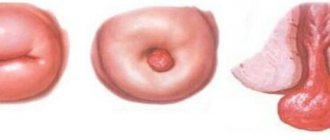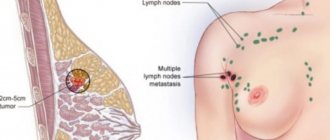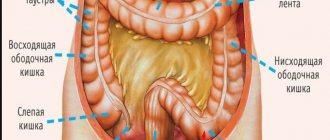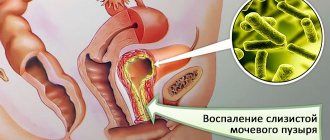Condylomas are one of those problems that force a woman to seek help from a doctor.
There are several types of condylomas, differing according to various authors and classifications.
In addition to violating the natural beauty of a woman, condylomas pose a serious danger.
For women, the appearance of various types of condylomas on the body, especially in intimate places, is a reason to immediately visit a doctor.
This is due to the peculiarities of the development of condylomas.
For men's health, condylomas pose no less danger.
It is necessary to distinguish between different types of condylomas, because they require different treatment methods.
More about the pathogen
HPV is a type of filtering virus and can infect both the skin and mucosal surfaces. This type of papillomavirus is most often transmitted sexually, if we are talking about photos of genital warts in men and women, or in utero, if we are talking about condylomas in a child.
Types of condylomas: genital, flat
There are several different types of condylomas.
These differences are based on the type of growth the virus causes when it enters the body.
According to the nature of development, the following types of condylomas are distinguished:
- 1.Endophytic;
- 2. Exophytic.
In addition, doctors distinguish such condylomas as:
- Pointed;
- Flat ;
- Wide.
Flat condyloma
Endophytic development is characteristic of flat condyloma.
The exophytic form is manifested by the appearance of genital warts.
It is accompanied by pathological proliferation of epithelial tissues.
Condylomas are the most common manifestation of the virus (HPV).
Before the discovery of the pathogen, the cause of the growths was considered:
- Trichomoniasis;
- Syphilis;
- Gonorrhea;
- Candidiasis;
- Taking antibacterial drugs.
There was also an opinion that this condition was a variant of the norm.
Because of HPV, genital and flat condylomas are formed.
When penetration into the body occurs, the human papillomavirus begins to develop deep into the cells.
In this case, only a round, flat seal is visible on the surface of the skin or tissues of the genital organs.
During colposcopy, an atypical zone with a clear contour is observed.
This type of condylomas in women is often located on the cervix.
Condyloma lata
Particularly worth noting is condyloma lata.
Condylomas lata form in humans as a consequence of the development of treponema pallidum.
At its core, such a neoplasm is a sign of the presence of secondary syphilis in humans.
Such condylomas appear in the second stage of syphilis.
Condylomas lata never cause cancer.
Manifestations of syphilis have been known since ancient times, but they learned to treat it relatively recently.
The appearance of growths on the skin of intimate areas is associated with the progression of syphilis.
Syphilis goes through three stages in its development.
Each stage is manifested by a whole range of symptoms.
The second stage of syphilis is the period when condylomas can be expected to appear.
Important! Most often, the bacteria is transmitted during sex.
It happens that a person becomes infected through household items.
This is a contact and household route of transmission of Treponema pallidum.
Symptoms of syphilis appear a month after infection with treponema.
The first sign is the appearance of hard chancre in the genital area, anus, and in the oral cavity.
These are small round ulcers that do not hurt, the edges are uneven and undermined.
Then there is an increase in the size of the lymph nodes.
In the absence of therapy, the chancre atrophies and disappears without a trace.
After this, the patient develops other rashes.
This stage is also characterized by other growths, after which traces remain.
Remember! Patients during this period are very contagious!
This happens because the plaques constantly become wet and discharge appears.
This liquid contains a large number of bacteria
In places where growths form, there is constant inflammation.
Therefore, formations can spread.
Their surface is uneven, looks like tubercles, and is covered with a gray sticky coating.
Upon examination, the doctor may identify growths that resemble mushrooms.
These areas sit on a wide base - a pedicle.
After treatment of condylomas lata, scar changes always remain.
They can grow to huge sizes
First, bubbles appear, they connect with each other and grow.
Inside such blisters there is usually serous exudate.
It happens that there is no characteristic rash on the body.
Therefore, when characteristic growths appear, it is necessary to perform an analysis.
The cause of the development of other forms of condyloma is the human papilloma virus.
Complications
For women, the presence of papillomavirus and the appearance of its external manifestations are dangerous due to the development of serious consequences. It often causes:
- dysplasia and erosion of the cervix - 62% of cases;
- squamous cell carcinoma of the cervix - 38% of cases.
The average age at which malignant transformation occurs is 40-45 years. A particular danger awaits a woman if the tumor process is hidden inside the body and does not give external manifestations, developing there for years.
Diagnostics
Most often, visible genital warts are diagnosed through a routine examination by a doctor and a review of the patient's medical history.
If an HPV infection is suspected without any visible symptoms, tests may be suggested. Women will be offered a pelvic examination and Pap test, followed by a tissue biopsy if abnormal cells are found. Biopsies for men are much less common and are generally not recommended by doctors.
Gynecological examination
For women without visible genital warts, diagnosing the presence of HPV will often involve a gynecological examination. This test usually includes a cytological (sometimes called Pap smear) test.
Prevention
Do not forget that every sexual intercourse should be performed only with barrier contraceptives. It is known that the main reason for the activation of the virus is the weakening of the body’s protective functions.
Therefore, a woman should constantly take measures to strengthen her immune system - rest more, move, avoid stressful situations, eat properly and rationally, get enough sleep, exercise, and avoid hypothermia.
In addition, it is recommended to undergo a medical examination at least once every six months, since advanced condylomatosis can cause cancer.
Why do genital warts recur?
Even if treatment is carried out on time, it does not guarantee against relapse.
The virus can become inactive, but remain in the body.
The reappearance of growths often occurs due to a decrease in protective mechanisms.
Decreased immunity causes the process to spread to intimate places.
When infected with the immunodeficiency virus, genital warts grow faster.
With this disease, giant colonies may appear.
Treatment of patients with HIV requires special experience from the doctor, usually it is surgical.
At the second stage, liquid nitrogen removal technology is used.
Pharmacy products
To treat genital warts, drugs can be used to necrotize the tissues of the formation, but they should not be acidic. Such products as Condiline, Condiline are suitable. The drug is applied exactly to the condyloma. Removal in this way is quite dangerous - it is difficult to apply the drug without affecting healthy areas. It is necessary to lubricate acute condyloma in the morning and evening for 3 days, after which a 4-day break is taken. If the formation does not fall off, then treatment is continued.
Despite the fact that treatment is carried out at home and independently, the patient must be examined by a doctor before treating genital warts and after the procedure. During the procedure, unpleasant side effects are possible: pain, burning, redness. There are also contraindications - during pregnancy, genital warts cannot be removed by this method, and those who are planning to conceive should postpone pregnancy for six months.
Local treatment methods include injections of interferon, which is injected into the area of condyloma formation. However, experts do not recommend using this method, since its effectiveness is controversial and the presence of side effects is high.
Buschke-Levenshtein condylomas
They are also called giant condylomas.
This form of the disease is a precancerous condition.
Degeneration into a malignant tumor occurs frequently!
Externally, Buschke-Levenshtein condyloma is similar to manifestations of skin cancer.
An experienced specialist will help you distinguish one from the other.
The usual location of giant condylomas is in the intimate areas.
In men, this can be the head of the penis, the foreskin.
In women, the labia are most often affected.
- 1. Giant condyloma forms many folds and looks like cauliflower.
- 2. Bacteria accumulate in these folds.
- 3. The consequence is the appearance of an unpleasant odor.
- 4. Infection and inflammation may develop.
During the examination, an increase in the nearest lymph nodes is recorded.
The growths can be localized in the lower abdomen, on the buttocks.
In difficult situations, they rise to the navel, chest and armpits.
Immunotherapy
Treatment with drug therapy is aimed at maintaining immunity and eliminating the symptoms of the disease.
The following immunomodulatory drugs will help prolong remission for many years and strengthen the body’s protective functions:
- Allocain-alpha. It is administered intravenously.
- Immunal.
- Cycloferon.
- Immunomax.
- Timazin.
- Levomisole.
- Polyoxidonium (in the form of rectal suppositories).
- Riaferon (in powder form).
It is mandatory to take antiviral drugs during treatment:
- Panavir.
- Acyclovir.
- Groprinosin.
- Isoprinosine.
- Epigen.
- Genferon.
- Viferon.
Topical ointments will help reduce the size of condyloma in women:
- Cycloferon.
- Interferon ointment.
- Vartek.
- Podophyllin.
- Condilin.
- Solcoderm.
- Fluorouracil.
- Feresol.
Among the traditional methods of treating condylomas, preference is given to:
- potato juice;
- celandine juice - applied exclusively to the growth, an aggressive agent that requires caution in use;
- castor oil;
- iodine;
- juice of garlic and onion.
All these remedies will reduce warts in women and relieve unpleasant accompanying symptoms such as itching, burning, and pain.
Medicines are prescribed only by a doctor after a series of tests. Using funds on your own can have disastrous consequences.
Treatment
Condylomas and HPV require a systematic approach to treatment.
Medication
To combat condylomas in women and men, doctors act in three directions:
- against viruses;
- in order to increase immunity;
- for fortification of the patient.
Cycloferon and inosiplex act against HPV activation and its reproduction. Inferon and allokin-alpha stop viruses and help restore the immune system. To improve the general health of women and men, Immunal, Amixin, Poludan, etc. are prescribed. A complex of vitamins and minerals is also an essential component of treatment for condylomas.
Local
Condylomas are successfully treated using ointments and sprays of antiviral action (epigen-intim, condylen, etc.). Women and men will not have to think about condylomas if they are treated with inquimod, podophyllotoxin. For pregnant women, you can use trichloroacetic and nitric acids. Women need to fight condylomas in stages: first remove them, and then, or in parallel, act to reduce the number of viruses. Often (in every third woman) condylomas enter the stage of relapse (especially if preventive measures are not followed and the recommendations of the attending physician are ignored).
Removal
Methods for removing condylomas in modern medicine are varied:
- Electric coagulation. This method has disadvantages - many contraindications, painful procedure and long recovery.
- Cryotherapy. Condylomas are removed using liquid nitrogen. The positive aspects of this technique are the absence of scars, painless effects, and the absence of anesthesia.
- Surgical method. The growths are removed during surgery, and stitches are placed at the site of the wounds. Doctors use local anesthesia.
- Use of chemicals. This method is contraindicated during pregnancy and lactation.
- Laser therapy. Condylomas are removed with a laser beam; this is a treatment that does not affect healthy cells and leaves virtually no scars.
- Radiosurgical method. The use of a special device helps remove condylomas without contact with the body. Removal of growths is accompanied by simultaneous sealing of blood vessels. This technique is one of the most modern and in demand.
Causes of condylomatosis
Condylomas on the labia
The main cause of condylomatosis in women is sexual contact of any form (oral, anal, vaginal) without contraception. There is an opinion that HPV is transmitted through household means - through personal hygiene items, underwear, but this has not been scientifically proven.
Condylomatosis in women can actively manifest itself against the background of factors provoking the activity of the virus.
These include:
- Damage to the mucous membranes and skin of the genital organs;
- Stress and constant nervous tension;
- Fatigue, lack of sleep, excessive exercise, poor diet or inappropriate diets;
- Decreased immunity - seasonal, during pregnancy and the postpartum period, with hormonal disorders in the body;
- Overheating or freezing of the body;
- Failure to comply with personal hygiene rules;
- Uncontrolled use of pharmaceuticals that can cause microflora disturbances.
Laser removal
This is a modern method of excision of formation, which has become widespread.
Its popularity is due to its advantages:
- painlessness;
- low-injury;
- bloodlessness;
- speed of the procedure;
- minimal risk of infection;
- short rehabilitation period;
- no scars.
Thanks to the precision of the laser beam, it is possible to remove growths even in particularly sensitive areas, such as the intimate area, eyelid, etc.
What does it look like
Externally, genital warts are an elevated thin formation with uneven (ragged) edges.
To make it easier to understand what they look like, you need to imagine a thread or a cone. This is what genital warts look like. The color of the formations can vary from pinkish, flesh-colored to brown. The size can reach 6 mm in height and 2-3 cm in diameter.
These phenomena are usually presented in a single form. Condylomas can merge with each other and form colonies that resemble cauliflower in appearance. Colonies have a diameter of up to 1.5 cm.
The initial stage is characterized by the formation of small tubercles or blisters that do not cause the woman any pain or discomfort. As the volume increases, a red stripe surrounding the growth will be visible.
The wart is soft and mobile to the touch. No pain or discomfort is felt upon palpation. If you accidentally damage a condyloma, this can lead to bleeding, slow healing of the wound, inflammation, and secondary infection.
Symptoms of the initial stage of genital condylomatosis
Classic symptoms of condylomatosis include the following:
Vaginal discharge during condylomatosis
- Formation of small protruding or flat formations on the skin;
- Itching, burning sensation;
- Feeling of constant humidity at the site of condylomas;
- The appearance of a foul odor;
- Bloody discharge is possible if the condylomas have been mechanically damaged.
Important! If, after the appearance of a condyloma, insufficient blood flows to this area of the skin, it may dry out and fall off without any outside intervention. But most often, literally a few hours are enough for the formation to grow to a size of 6 mm or more.











